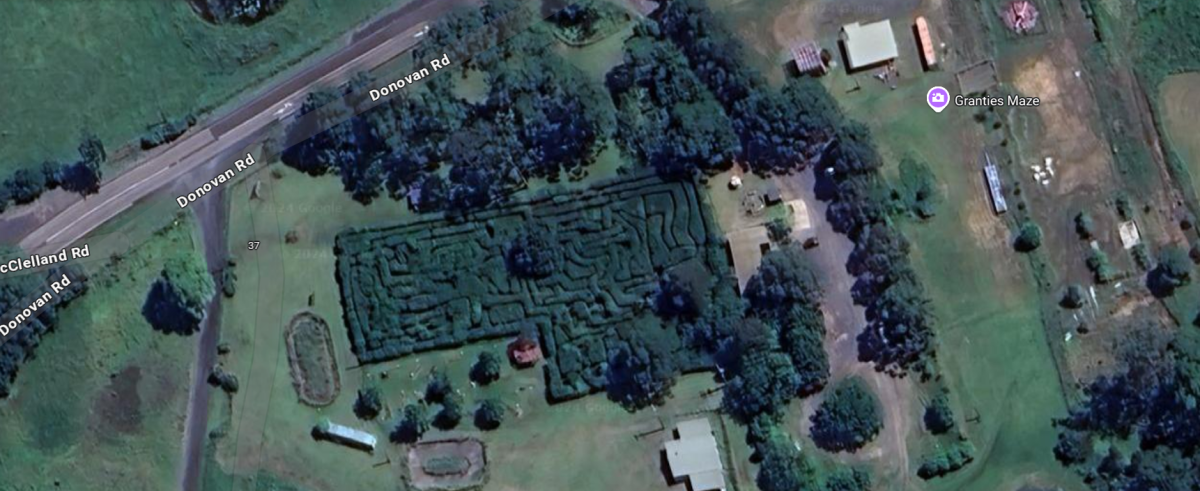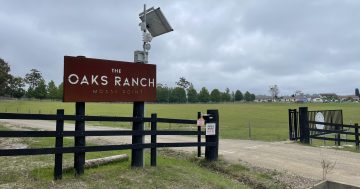
The owner of Granties Maze has been ordered to demolish 27 of the attractions at the park. Photo: Google Maps.
If you’ve ever had a hankering to try “archery tag” or something called “Kapow”, you may have missed your chance.
Part of Granties Maze at Foxground, the attractions were part of a dream that was just too big for John Bruce Grant to pull off, according to a recent judgement from the Land and Environment Court.
Mr Grant lodged development applications (DAs) for a tourist attraction in 1985, more than a decade after he returned from military service in Vietnam.
The businessman hoped the hedge maze and kiosk he installed after the council approved his DAs would be the start of an extensive tourist park.
Instead, he spent decades locking horns with Kiama Council.
In 1988 and again in 2002 and 2004 he was denied development consents for a tourist facility and Granties Maze was closed for years.
On appeal, in 2005 he was granted deferred consent for some of his applications, and was able to reopen the facility.
However, zoning changes in 2011 meant operating a tourist facility on the site was prohibited.
Despite the zoning change, Mr Grant maintained he had received the council’s permission for a number of rides and attractions, including the garden maze, archery range, mini-golf course, paddleboats, bumper cars and hayrides.
Mr Grant wanted to expand, and in 2008, 2009, 2013, 2014 and 2015, he lodged modification applications seeking various amendments to the conditions in the 2005 consent.
Not content to wait and see, during this time Mr Grant installed an additional 15 attractions on site without approval.
In August 2016, Mr Grant sought consent to add 20 new attractions, as well as consent for the use of the 15 attractions he had already installed. The council refused the application in 2019.
This appeared to be a bridge too far for the council. On 15 July 2021, Kiama Council issued three separate development control orders to Mr Grant, requiring him to stop the use of attractions at Granties Maze and “demolish and remove all structures and attractions” from the land.
The reasons for the delay between Mr Grant’s application and its refusal, as well as the delay between the refusal and the order for demolishment, are unknown.
Mr Grant appealed the order, however, and asked the Land and Environment Court to prohibit council staff from entering his property to dismantle the rides.
He said there had not been a “genuine accident” since the park reopened.
Earlier this month (December) the Land and Environment Court found in favour of Kiama Council.
The court gave Mr Grant 28 days to stop use of a number of attractions and a further 90 days to demolish those same attractions.
These include a giant slide, paddleboats, an archery range, archery tag, and hover archery, hay and Clydesdale rides, ninja walls, an inflatable structure called Kapow, a large metal structure called Time Freak, a bumper car track and tyre maze.
Some rides and attractions, including the garden maze, giant chessboard and merry-go-round, will be allowed to remain.
Mr Grant told the court he intended to seek compensation from Kiama Council for being “discriminated and victimised”.
He said he had spent more than $10 million developing the park since he purchased the land in 1983, was 76 years of age, and asked for permission to continue to trade and to erect a sign on the Princes Highway directing people to Granties Maze.
The court directed Mr Grant must remove the unapproved highway signage.
In his judgement, Justice John Robson said he did not intend to attack Mr Grant’s vision of a tourist and amusement park, but as the sole operator and employee of the park, it was not possible for Mr Grant to operate multiple rides safely.
“My finding is not to decry Mr Grant’s genuine attempts and desires to provide a safe, efficient and attractive environment for the provision of amusement rides and attractions on the land,” he said.
“However, I accept … the operation of Granties Maze is insufficiently managed, operated, and maintained to offer a basic family amusement park.
“Further, apart from planning law, I accept … the business, as presently undertaken, is unprepared, unskilled, and incapable of operating the quantity of attractions and amusement rides to a standard contemporary with modern times and regulations including Australian Standards and NSW Safe Work Regulations.”
Original Article published by Zoe Cartwright on Region Illawarra.










